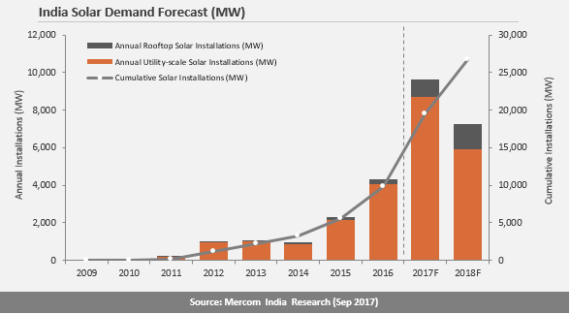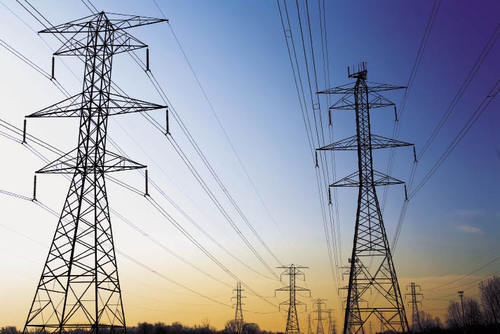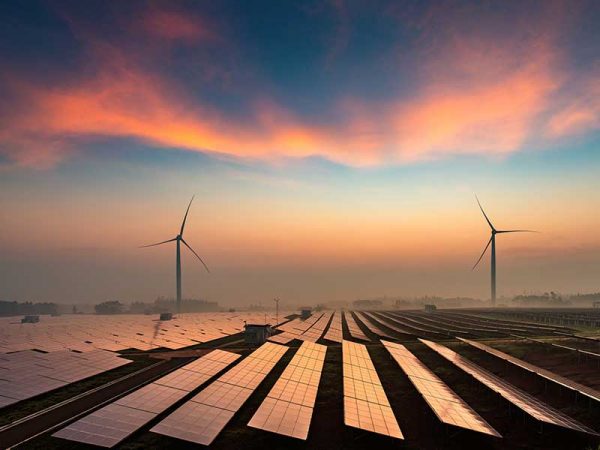India installed a total of 2.2 gigawatts worth of solar in the third quarter, up 300 megawatts from the previous quarter, and left another 1 gigawatt unconnected due to grid issues caused by government agencies, according to Mercom India.
Mercom India Research published its third-quarter India Solar Market Update report this week, detailing a total of 2,247 MW (megawatts) of new solar capacity constructed and added to the Indian grid during the third quarter. This might sound pretty good, considering that India installed an impressive 4.8 GW (gigawatts) in the first half of 2017 — and it is pretty good, when you take into account India only installed 4.3 GW of solar for the whole of 2016.

However, according to Mercom India Research, approximately 1 GW worth of large-scale solar projects were left completed but unconnected due to grid connection and grid evacuation delays caused by government agencies. Mercom explains that these delays further contributed “to the slower than expected installation figures seen in Q3” — which shows just how much experts are expecting from the Indian solar industry this year.
Throughout the third quarter a total of 265 MW worth of rooftop solar was installed, and 1,982 MW worth of large-scale solar projects, bringing 2017’s cumulative installed solar capacity up to 7.1 GW. Meanwhile, India’s pipeline of utility-scale projects currently sits at around 11.5 GW, with another 5.6 GW worth of tenders pending auction.
“Even though the Indian solar market is on pace for a record-breaking year, the momentum has definitely slowed,” said Raj Prabhu, CEO of Mercom Capital Group. “Just like the preceding quarter, we saw many project commissioning dates get delayed. In addition, there are approximately 1 GW of large-scale solar projects that are complete but unable to get connected to the grid. These factors are likely to lead to a weaker-than-projected Q4.”
Looking forward, Mercom predicts that total solar installations for 2017 will peak in the range of 9.5 GW to 10 GW, before sliding back to 7 GW in 2018.

Mercom also highlighted the fragility of the Indian solar market at the moment, caused by uncertainty over tariffs and tax rates. “After solar tariffs fell below the ₹2.50 (~$0.0385)/kWh level in Q2 2017, tender and auction activity came to a grinding halt as distribution companies (DISCOMs) pushed developers to match those low tariffs no matter what state they were in,” Mercom India Research noted, adding that “the central government has directed states to honour signed PPAs and not to try and renegotiate contracts, they cannot force DISCOMs to buy power at any price.”
There is also ambiguity surrounding what GST tax rates will apply to which component of solar manufacturing, with 5% set for solar modules as the only component with any real clarity, compared to the possibility of GST rates anywhere between 18% and 28% for other components.
“An extremely cost sensitive market like India will find it very tough to handle any aggressive imposition of tariffs,” explained Prabhu. “The developer community could adjust and model their bids accordingly, but we are concerned that state utilities who are already renegotiating PPAs so that they can procure solar power at the lowest possible prices will stop buying more solar if the tariff moves toward the ₹3.50 (~$0.054)/kWh level.”
Source: https://cleantechnica.com/2017/11/22/india-installs-2-2-gw-solar-third-quarter/


